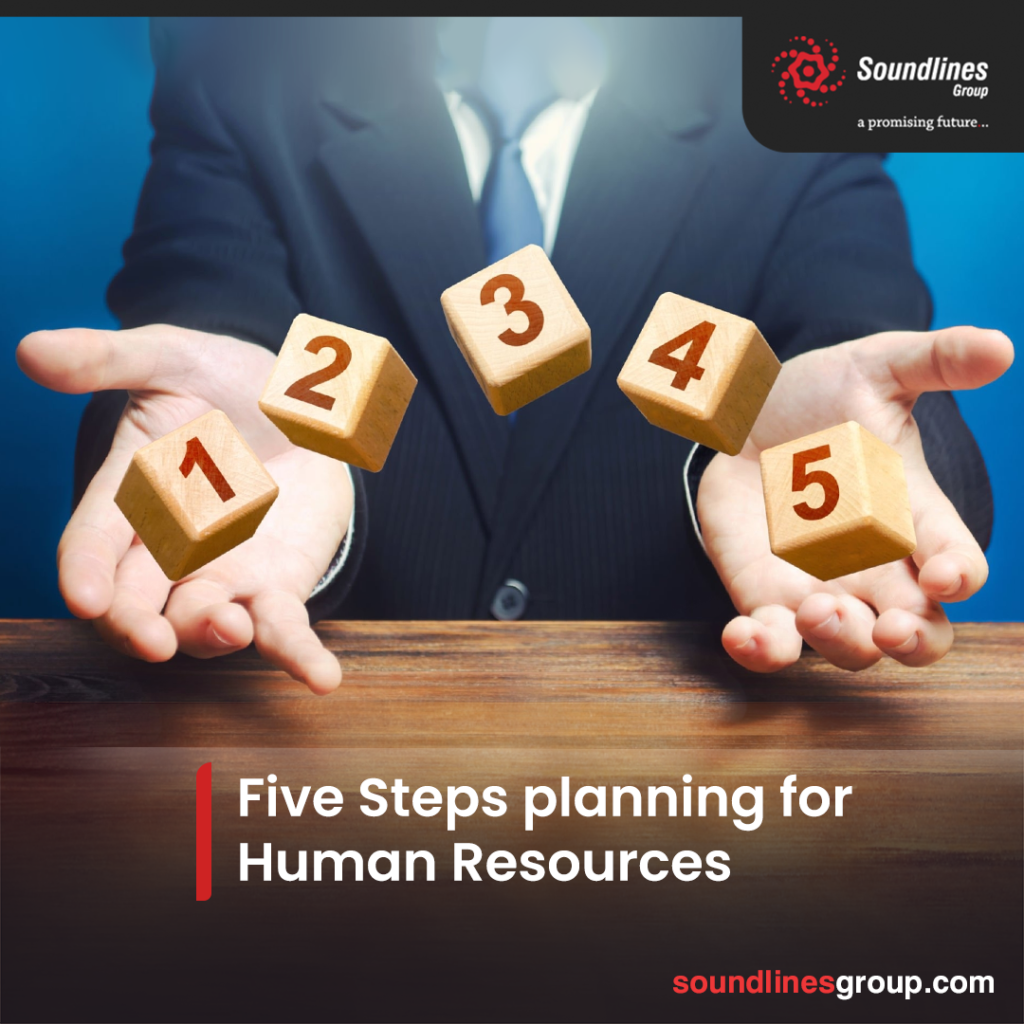Most entrepreneurs do not enter the company into becoming human resources specialists. They start a company because they have a love for it and feel they can fill a demand in the market. Unfortunately, maintaining a human resources structure is essential to the development and profitability of a firm. The issue is that most business owners lack knowledge about how to construct a compliant human resources program. Human resource programs provide outsourcing and customer assistance, allowing them to dedicate more time to enhancing their company’s core skills.
Five Planning Measures Every Company Should Employ
Human Resources is sometimes considered a “necessary evil” since it does not directly contribute to money generation. Nevertheless, human resources are essential for fostering productive, satisfied workers and sustaining a workforce capable of meeting the company’s primary business requirements. A common practice we do with new or potential customers is a five-step study to establish what human resources service their particular businesses demand and how to scale those services in light of their anticipated future development.
- Evaluation of Organizational Plans and Goals
In order to organize and streamline the human resources department, you must first do a detailed and exhaustive examination of the organization’s strategies and goals. Every company will operate differently and pursue various objectives. Before trying to make changes to the present human resources infrastructure, it is crucial to thoroughly understand the company. Having a professional employer organisation (PEO) come in and do a comprehensive audit of everything currently in place is a wonderful approach to alleviate this strain and may give an expert insight into how your company’s human resources department should operate.
- Preparing an Inventory of Human Resources
The next phase in the planning procedure is to conduct a comprehensive human resources inventory. A comprehensive catalog including basic demographic information on each employee must be compiled, including a breakdown of workers by education, expertise, skills, age, sex, pay, civil status, and any other relevant training or certifications. This first stage may seem tiresome, but collecting this information on your company’s workers will guide payroll, benefits, and recruitment.
- Future Supply and Demand Evaluation
Forecasting is another term for evaluating human resources’ future supply and demand. Forecasting is a crucial step in determining your market and any prospective changes that may be on the horizon. As you gain government contracts or new customers, you may find yourself in a situation where you must onboard a large workforce simultaneously. Or, you may anticipate a future market contraction and need to prepare how to modify your function of human resources.
- Equilibrating Supply and Demand
Demand and supply impact the recruiting and hiring process. An approach for utilizing the available resources is moving demand to meet current supply to flatten demand. Alternately, adjusting capacity to demand variations is another approach. This is comparable to the “supply and demand” study a business does to determine the amount of their service or product required in a particular market, except that this analysis focuses on your organization’s human resource requirements.
- Establishing a Plan of Action
When developing an action plan, several aspects must be taken into account. For instance, does the company now have a deficit or excess human resources? Does the organization have a current staff recruitment, hiring, education, evaluation, compensation, and training strategy? Are existing services adequate to fulfill future and current human resource requirements?
Recruiting is a fundamental role of human resources that is often left to chance. When a need exists, a corporation attempts to meet it. However, without a solid recruitment strategy, it may be difficult to identify the best candidates. To build an effective recruiting strategy, businesses should first inventory their present jobs, identify any future requirements, assess the experience and education needed to fill those roles, and, last, identify potential experience or performance shortfalls within existing departments. Create a creative and captivating job description for each position that has to be filled promptly (this will attract candidates and inform how and where the company should look for candidates).
Employee training is another crucial human resources role that is often neglected. Numerous federal contracts and an increasing number of states, for instance, mandate morality and/or sexual harassment training as a standard employment component. What about certificates and training tailored to certain roles? Will the corporation conduct this training internally or outsource it to a third party?
Takeaway for Employers
Evaluating your company’s entire human resource requirements may be time-consuming, but it is worthwhile. You would not start a company without a production, marketing, and sales strategy. Similarly, you must have a good strategy for administering human resources functions inside your firm. While a competent human resources program is essential for all firms, it is often secondary to the company’s main business role. Small and medium-sized businesses may cost-effectively maintain a competent and compliant human resources department by outsourcing HR activities.
Are you looking to build and manage an international talent pipeline for your business? Are you looking to hire overseas manpower for your company?
Click here to schedule a callback from our HR management experts.
